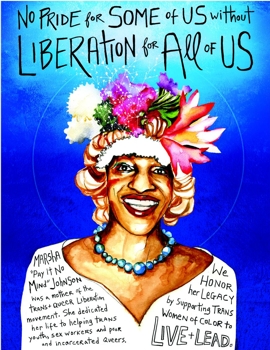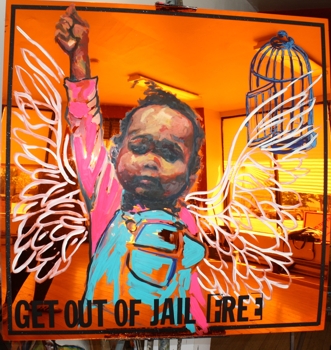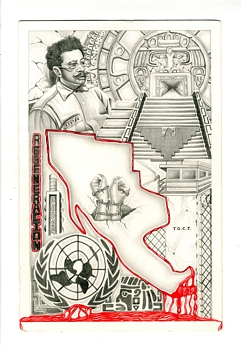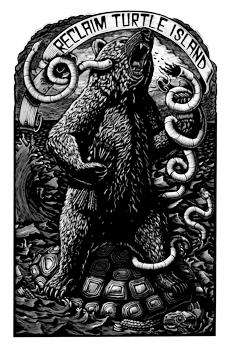 The Certain Days: Freedom for Political Prisoners Calendar is a joint fundraising and educational project between outside organizers in Montreal, Toronto, and New York, in partnership with three political prisoners being held in maximum-security prisons in New York State: David Gilbert, Robert Seth Hayes and Herman Bell.
The Certain Days: Freedom for Political Prisoners Calendar is a joint fundraising and educational project between outside organizers in Montreal, Toronto, and New York, in partnership with three political prisoners being held in maximum-security prisons in New York State: David Gilbert, Robert Seth Hayes and Herman Bell.
The Certain Days Calendar can be purchased from Kersplebedeb Leftwingbooks.NET by clicking here
The Calendar was a project first suggested by Herman in 2001, and has been shaped throughout the years by all of our ideas, discussions, and analysis. All of the current members of the outside collective are grounded in day- to-day organizing work other than the calendar, on issues ranging from migrant justice to community media to prisoner solidarity. We work from an anti-imperialist, anti-racist, anti-capitalist, feminist, queer- and trans- liberationist position.
Today’s struggles for liberation, and against capitalism’s permanent war, ecological destruction and colonialism, are rooted in the history of earlier struggles for justice, including the mass movements of the 1960s and 70s. Many political prisoners and prisoners of war featured in this calendar were organizers during that period: members of the Black Panther Party or the American Indian Movement,PuertoRicans fighting for their homeland,or white anti-racist allies working in solidarity with oppressed peoples. Many of them have been in prison for 40 years or more. Even more organizers have been locked up in the decades since. Yet these prisoners are not relics of past movements. They are still active in their political work, and despite the hardships of organizing in prison, they continue to organize for justice in the present day, behind bars and on the streets. The dates from movement history noted/commemorated in the pages of this calendar serve to educate/remind us of that rich and ongoing tradition of resistance. Given that prison robs people of the ability to mark time—having access to calendars was one of the demands of the 2011 California prisoner hunger strike—creating a calendar that talks about prisons is an act of resistance in and of itself. We hope our work together on this calendar can act as a bridge between our various contexts: inside and outside the prison walls, the differing realities of the U.S. and Canadian states, and between the movement generations.
Here is the annual statement from the Certain Days collective, explaining the theme of 2017’s calendar:
Certain Days 2017: SUSTAINING MOVEMENTS
As we prepare to print this calendar in July 2016 (many months before it may reach your wall), it seems as though a societal shift may be on the horizon. The Black Lives Matter movement and anti-austerity demonstrations are mobilizing people against oppression worldwide. At the same time, the spectre of fascism looms large, both with the impending U.S. presidential elections and elsewhere.
Yet history has shown that if we want to make fundamental change we need to be prepared for a protracted struggle — a lifetime (or several) of work. But what sustains a movement? What visions and strategic orientations position us to win? What lessons can be drawn from past victories and defeats? What keeps us from burning out, giving up, or being crushed by repressive forces? These are some of the questions that informed this year’s edition of Certain Days.
Although the day-to-day tasks of any organizing campaign are certainly enough to take up all our time and energy, it’s vital that we pause to reflect on these questions if our movements are to survive, and to succeed. A critical analysis of the way we work allows us to become more effective over time, and to respond to changing conditions in the world — be they upsurges in popular mobilization, policy changes, or new forms of repression. Beyond looking at our own work, we need to learn from those who have come before us. The rewriting or erasing of our histories keeps us from incorporating lessons that have already been learned time and again. Looking to movements in other eras and places also gives us a window onto conditions of struggle that we haven’t had a chance to experience in our own lives.
Our movements are strongest when they can involve people wherever they may be — across prison walls and borders, and across divides like gender, race, and class — with leadership and meaningful participation from those most affected by a particular issue. For true unity, we need a genuine willingness to resolve internal conflicts and to grow as people and as organizations. A willingness, but also concrete tools, as we are bound to reproduce the divisive relations of the dominant society, and it will not teach us to undo them. This growth work needs to be coupled with a sense of connection with those who share our vision, a commitment to each other and our common goal, even in times of disagreement. Easier said than done, of course. Over the years, our own small collective has struggled with sustainability, and has at times failed to enact these growth practices.
If we are truly in this for the long haul, we need to think in terms of time frames longer than any one person’s involvement. We need ways to make movement spaces accessible to children and parents, and to involve multiple generations in our organizing. Just as studying history can teach us valuable lessons, movement elders like those paid tribute to in the art and writings of this calendar — Kuwasi Balagoon, Marsha P. Johnson, Marilyn Buck — provide inspiration and a sense of continuity. With each passing year, more of our elders join the ancestors. We remember their contributions, and honour their legacies.
Given the role that prisons play in keeping people down, it’s especially important that any work for social transformation include prisoners — not just organizations that work with prisoners, but grassroots involvement from prisoners themselves. Some of the most militant organizing on this continent at present is happening in prisons, such as the prisoner work stoppages in the U.S., and the hunger strikes underway at two Canadian migrant detention centres in Ontario.
But none of these ideas can provide a complete roadmap. To fully understand what sustains a movement, we need reflection and analysis, but we also need to dream, toimagine what has yet to be built. In the following pages you’ll find art, poetry and essays that invite that kind of dreaming. We offer you this year’s Certain Days calendar, and look forward to seeing what it helps to build.
The Certain Days Collective: Sara Falconer, Helen Hudson, Daniel McGowan
Some Artwork from the 2017 Certain Days Calendar

by Farha Najah

by Oscar Lopez Rivera

by Sophia Dawson

by Emory Douglas

by Xinachtli

by Micah Bazant

by Mazatl

by Marius Mason

by Kevin “Rashid” Johnson

by Leonard Peltier

by Amanda Priebe

by Ali Cat Leeds
The Certain Days Calendar can be purchased from Kersplebedeb Leftwingbooks.NET by clicking here
Nov 12 at 11 AM to Nov 13 at 6 PM



